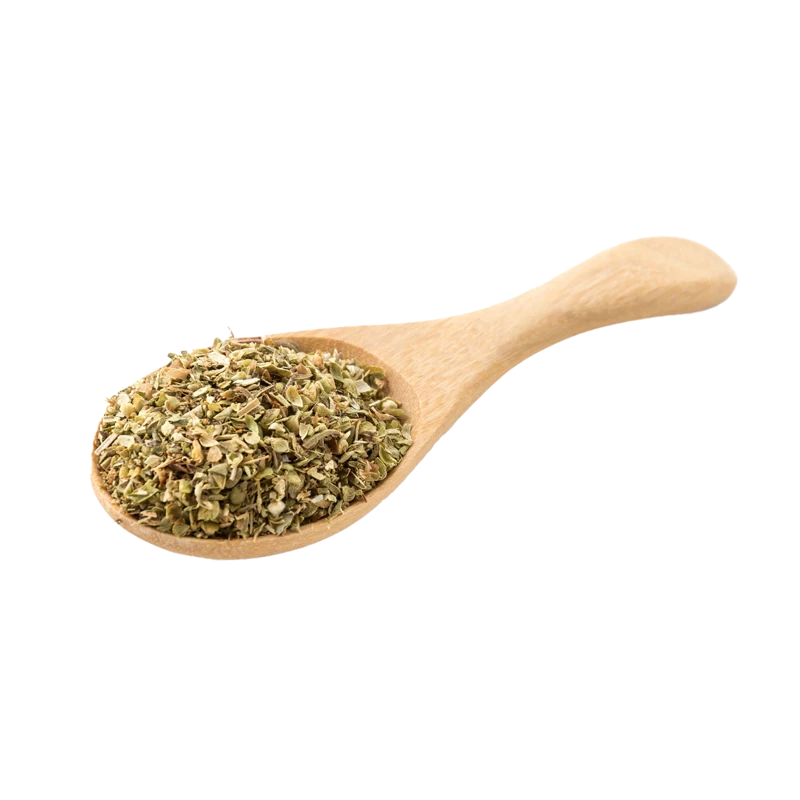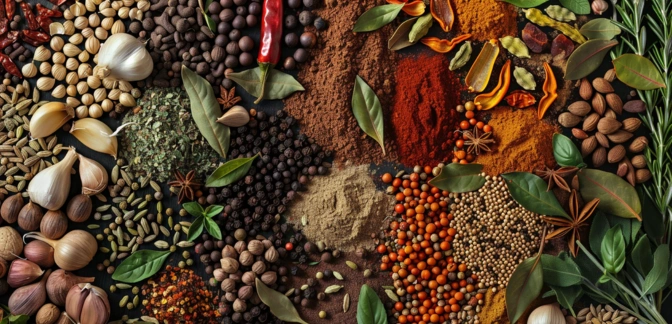Oregano — Nutrients, Health Benefits, and Shopping Tips

Written by Listonic Team
Last update on September 4, 2024
Nutrition facts
Nutrition facts
Amount per 100 g
Calories
🔥 265 kcal
| Nutrition per: 100 g | Value | % Daily Value* |
|---|---|---|
| Carbs | 69 g | 25.09% |
| Fiber | 43 g | 153.57% |
| Sugars | 4 g | 8% |
| Glycemic Index | 5 | - |
| Protein | 9 g | 18% |
| Sodium | 15 mg | 0.65% |
| Total Fat | 4 g | 5.13% |
*The % of Daily Value (DV) tells you how much a nutrient in a serving of food contributes to a daily diet. 2,000 calories a day is used for general nutrition advice.
43 g
✅ High Fiber Content
5
🟢 Low Glycemic Index
Did you know?
Health benefits
- Rich in antioxidants such as thymol and carvacrol, which help protect the body from free radicals and reduce inflammation.
- Contains antimicrobial properties, which can help fight off infections and improve overall health.
- Supports digestive health by stimulating the production of digestive enzymes.
- Rich in essential vitamins and minerals such as Vitamin K, Vitamin A, and manganese, which support overall health and well-being.
Health risks
- Potential for allergic reactions in some individuals, particularly those allergic to plants in the Lamiaceae family, causing symptoms like itching, swelling, or difficulty breathing.
- Risk of digestive discomfort such as bloating or gas when consumed in large quantities, especially in sensitive individuals.
- Potential for contamination with pesticides or harmful bacteria if oregano is not properly washed or sourced from reputable suppliers.
- Possible interactions with medications particularly blood thinners, as oregano may have mild anticoagulant effects.
How to choose oregano
Fresh oregano leaves should be bright green and have a strong, aromatic scent when gently rubbed between your fingers. The stems should be firm and the leaves intact without any wilting.
Oregano that is yellowing or has dried out should be avoided, as it indicates that the herb is no longer fresh. Brown or black spots on the leaves should also be avoided, as these are signs of fungal infection or poor handling.

How to store oregano
Dried oregano should be stored in an airtight container in a cool, dark place. A pantry or spice rack is ideal for preserving its flavor and aroma. Properly stored, dried oregano can last up to a year.
Humidity and light can degrade the quality of dried oregano. Avoid storing it in clear containers or near heat sources. Ensure the container is tightly sealed to prevent exposure to air and maintain its potency.
✅ Extra Tip
How long does it last?
Oregano can last for 1-2 weeks in the refrigerator when stored in a plastic bag with a paper towel to absorb excess moisture. For longer storage, oregano can be dried and kept for up to 6 months in an airtight container.
What to do with leftovers?
Leftover oregano can be used in a variety of culinary and non-culinary ways. In the kitchen, oregano adds a robust, earthy flavor to dishes like pasta sauces, pizzas, roasted vegetables, and grilled meats. It can be used fresh or dried, and is a key ingredient in Mediterranean and Mexican cuisines.
Beyond cooking, oregano has several practical uses. It can be brewed into a tea, traditionally used to help relieve respiratory issues and support digestion. Oregano’s essential oils have natural antibacterial properties, making it useful in homemade cleaning solutions or as a natural disinfectant. Fresh oregano can also be added to potpourri or sachets to bring a refreshing scent to your home. Additionally, oregano can be used in DIY beauty treatments, such as an herbal steam to cleanse and refresh the skin.
👨⚕️️ Medical disclaimer
How oregano supports specific health conditions
Oregano is a flavorful herb rich in antioxidants, such as thymol and carvacrol, which support immune health by protecting cells from oxidative damage. It has anti-inflammatory properties that promote heart health by reducing inflammation and improving circulation. Oregano also supports digestive health by stimulating digestive enzymes and reducing bloating. Its antimicrobial properties make it a powerful herb for overall well-being.
Discover products from other categories
Listonic Team
Fact-checked
Our editorial team checked this article to make sure it was accurate at the time of publishing it.
Get the top-rated shopping list app on your phone!







